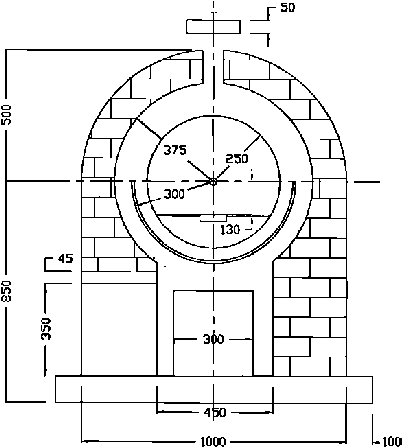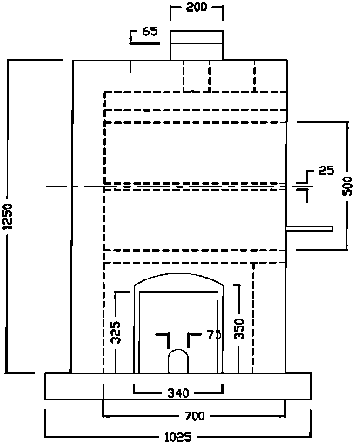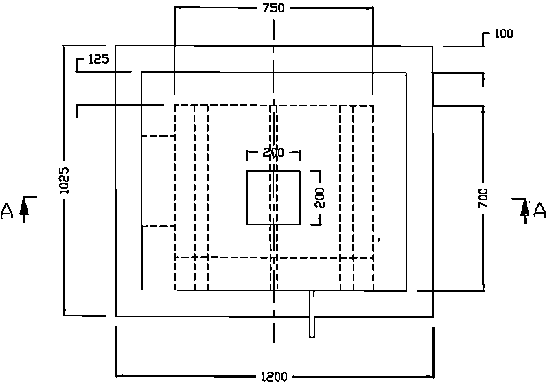Difference between revisions of "How to Build a Peanut Roaster"
| Line 235: | Line 235: | ||
[[Category:Requested translation to Spanish]] | [[Category:Requested translation to Spanish]] | ||
| − | |||
[[Category:Requested translation to Portuguese]] | [[Category:Requested translation to Portuguese]] | ||
| + | |||
| + | {{French Translation}} | ||
Revision as of 10:12, 11 June 2013
Two ways to support the work of howtopedia for more practical articles on simple technologies:
Support us financially or,
Testimonials on how you use howtopedia are just as precious: So write us !
<paypal />
Contents
Peanut Roaster
- Problem:To build up a peanut roaster
- Information Type: Application
- Difficulty: Medium
- Price Range: Less than 50 US$
- Material Needeed: Brick, Sand, Clay, Empty tar barrel, GI Sheet, Empty marga tin, Cylindrical wood or PVC Piping
- How Many people? One Person
Background
In urban and sub-urban areas, roadside peanut vendors are a common sight. This is because roasted peanuts are a popular snack and there is a good market. The street vendors use a small open pan with sand as a roasting agent (sand bath) to roast the shelled peanuts. The fuel sources most commonly used are gas and kerosene. This roaster is not very efficient and it has been detected that the sand, can be harmful to the body. The medium-scale manufacturers who have access to larger amounts of capital hire the use of a bakery oven to roast the peanuts. The peanuts are spread in a shallow pan and put into the oven and roasted over a moderate heat. There are also gas fired high cost peanut roasters available in the country. These are efficient and less troublesome (as opposed to using the other two methods) yet they are not affordable to small-scale food processors.
Practical Action South Asia’s involvement in developing appropriate peanut roaster for small scale food processors stems form a request from a NGO called Vinivida in 1995. One of their beneficiaries was involved in peanut roasting and had inquired about a more efficient way of doing it.
The roaster
The apparatus is basically a manually operated rotating drum that is heated externally. This structure is housed in a brick and clay construction (similar to a small-scale bakery oven). The roaster can be fabricated at any welding workshop and has no high technology components. An ordinary mason can do the installation and construction of the hearth.
This roaster does not need gas or kerosene but uses paddy husk, sawdust or peanut shells as a fuel source. This is a low cost, freely available raw material and it is also a waste product from other industries. Peanut shells are normally not re-used and have faced problems of disposal. By using it as fuel source it alleviates that problem.
30 kg of peanuts takes 30 minutes to roast. Plus the peanuts are evenly roasted with fewer losses due to over roasting.
The roaster could also be used to roast coffee, condiments, chilli, herbs or similar commodities.
Advantages over the present equipment
- A sand bath is not used and there are no health risks.
- The continuous rotation of the drum throughout the process results in uniformly roasted peanuts
- The producer has a control over process and timing.
- A solution to peanut husk/shell disposal as well as re-using by products (paddy husks/ sawdust)
- Low fuel costs
- The operation of the machine is very simple and suitable for men and women.
- Can be used for a range of products
- If required, it can be converted to use firewood as a fuel source
- The machine is low in cost and efficient.
Technical Details
|
Material Required | |
|
The drum roaster. | |
|
An empty tar barrel (outer drum) |
- 1 Nos |
|
22/24 Gauge GI sheet (inner drum) |
- 1 Nos |
|
The oven and the hearth: | |
|
Bricks |
- 250 Nos |
|
Fine sand |
- 35 Nos |
|
Clay |
- 35 Nos |
|
An empty marga tin - for hearth (with a 100mm diameter hole at the base) |
- 1 Nos |
|
Cylindrical wood or PVC Piping (for hearth) |
- 2 Nos |
Construction
See Practical Action South Asia technical drawings
The rotating drum roaster
The Drum roaster consists of two drums.
The outer drum (the tar barrel) is fitted to the brick work. It should be fitted in a manner in which the bottom plate of the barrel is detachable. This plate has to be replaced, because the plate is exposed to the hearth and is burnt during operation.
The inner drum is made from the 22/24 Gauge GI sheet. A small portion of this drum is made similar to a drawer that is detachable for loading and unloading peanuts.
The clay oven
The brick oven is built using clay and sand mixture according to the dimensions given in drawings.
Specific requirements
The roaster needs a floor area of 1200mm x 1025mm
Capacity
• The drum can handle a load of 5 kg of peanuts at one time. It can roast 10kg/hr.
• The roaster can also be used for other materials and the load will differ accordingly.
Operation
The hearth (marga tin) is filled with paddy husks, sawdust/peanut shells. It is well compacted leaving a cylindrical opening at the centre (vertical) extending it horizontally at the bottom. This is done by inserting two cylindrical poles before packing with fuel source. Once the packing is complete the two poles are pulled out carefully creating two tunnel-shaped openings.
The hearth is lit by inserting some firewood into the base of the “airways”.
The hearth is placed at the inlet of the stove which is constructed around the peanut drum roaster.
The drum roaster is loaded with the peanuts or other food commodities (using the drawer that is detachable).
Once the hearth is lit, continue rotating the inner drum while checking the peanuts occasionally. Allow 20 minutes of roasting before checking it and then check every 3 minutes.
When peanuts have been suitably roasted, unload the peanuts onto a wire mesh to avoid over burning.
Maintenance
The outer drum needs to be replaced as it gets burnt and cleaned after use.
Cost
|
Drum fabrication: |
Rs. 3,500.00 |
|
Construction & installation: |
Rs. 4,550.00 - 5,500.00 |
Note: The cost can differ depending on availability of materials and transportation etc.
|
Prepared by:Practical Action South Asia |
Illustrations and Plan
Practical Action, The Schumacher Centre for Technology & Development
Bourton Hall, Bourton-on-Dunsmore, Rugby, Warwickshire CV23 9QZ, UK
Tel: +44 (0)1926 634400 Fax: +44 (0)1926 634401 E-mail: infoserv@practicalaction.org.uk Web: http://www.practicalaction.org
Intermediate Technology Development Group Ltd Patron HRH - The Prince of Wales, KG, KT, GCB
Company Rag. No 871954, England Rag. Charity No 247257 VAT No 241 5154 92
</div>
References and further reading
This Howtopedia entry was derived from the Practical Action Technical Brief 'Peanut Roaster.
To look at the original document follow this link: http://www.practicalaction.org/?id=technical_briefs_food_processing
Useful addresses
Practical Action
The Schumacher Centre for Technology & Development, Bourton on Dunsmore, RUGBY, CV23 9QZ, United Kingdom.
Tel.: +44 (0) 1926 634400, Fax: +44 (0) 1926 634401
e-mail: practicalaction@practicalaction.org.uk
web: www.practicalaction.org

Related Articles
Categories



